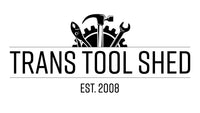
Bodies in Doubt, Second Edition
Regular price $32.00 Save $-32.00Bodies in Doubt
An American History of Intersex
Second Edition
by Elizabeth Reis
This renowned history of intersex in America has been comprehensively updated to reflect recent shifts in attitudes, bioethics, and medical and legal practices.
In Bodies in Doubt, Elizabeth Reis traces the changing definitions, perceptions, and medical management of intersex (atypical sex development) in America from the colonial period to the present. Arguing that medical practice must be understood within its broader cultural context, Reis demonstrates how deeply physicians have been influenced by social anxieties about marriage, heterosexuality, and same-sex desire throughout American history
In this second edition, Reis adds two new chapters, a new preface, and a revised introduction to assess recent dramatic shifts in attitudes, bioethics, and medical and legal practices. Human rights organizations have declared early genital surgeries a form of torture and abuse, but doctors continue to offer surgical "repair," and parents continue to seek it for their children. While many are hearing the human rights call, controversies persist, and Reis explains why best practices in this field remain fiercely contested.

